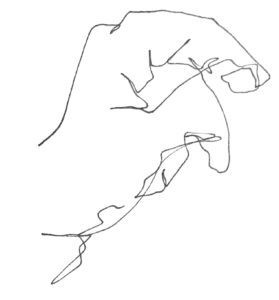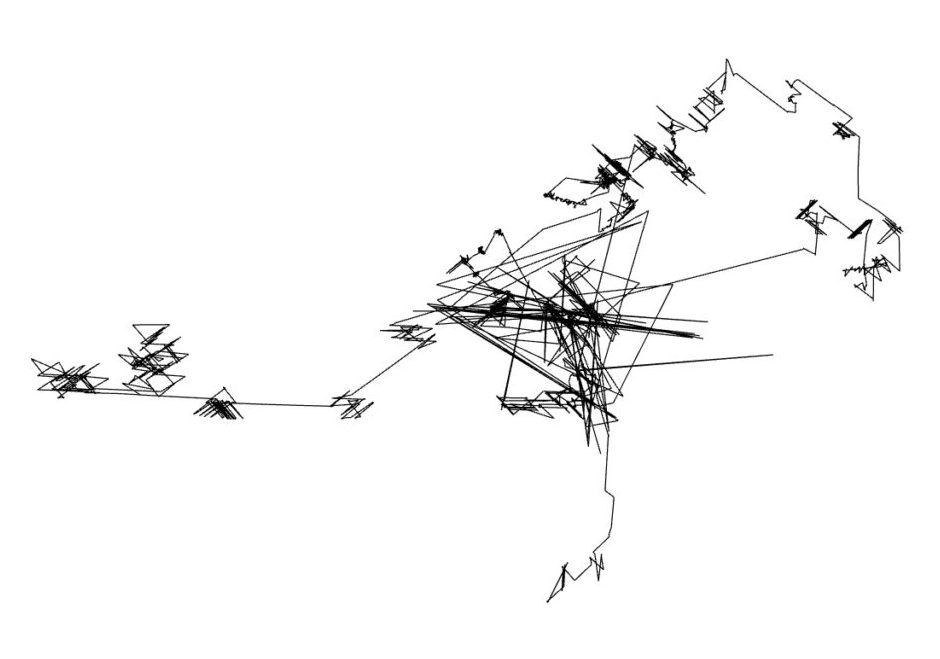This experiment came right after Experiment 1, using the same set-up, eye-tracker and calibration. The left hand was again posed on the table in front of me in the same way as in my previous post, and I blind-contoured it with my right hand.
Three mentions need to be noted. Firstly, during my past eye-drawing attempts I associated some experiential aspects of the practice of eye-drawing to blind-contouring (Attard, 2018, pp. 133 – 136). I felt
confident in doing so due to the extensive blind-contouring sessions I did in the past as a drawer myself. I feel that the most important similar characteristics to note are; how the eye behaves like a pencil (with the difference that in blind-contouring it coordinates with the hand), and how the eye experiences ‘synthetic’ contouring while gazing at the subject (in this case – my left hand).
Secondly, I saw that in some cases this technique has been referred to as blind-contouring (Nicolaïdes, 1969; among others), while in others as blind-drawing (Tchalenko and Miall, 2017; Petherbridge, 2010; among others).
Thirdly, blind-contouring is a practice which has been observed to be automatically implied by artists when drawing from life after they gain several experience (Tchalenko and Miall , 2017). Together with the latter point it is important to emphasise that I am not referring to the technique’s automatic induction for unconscious imagery, but to an enhanced seeing-drawing understanding.
Figure 3 shows my blind-contoured hand and Figure 4 illustrates my eye-scanpath while drawing it. The blind-contouring exercise lasted 24 seconds. Unlike in my previous post, the eye-scanpath (my gaze) does not show any reference made to the ongoing drawing on paper, and instead of several ‘traces’ projecting outward from the ‘shape’ of the hand, Figure 4 evidences a more linear/contained/controlled quality. This includes several fixation points along the hand’s ‘outline’. Some agitation occurs at the central area of the hand, which is presumably the area where the eye had to move along the superimposed fingers (therefore needing more perceptual understanding). I also suspect that some fixation occurred at points when my (drawing) right hand was ‘catching-up’ with the eye-movements. How much does this eye-tracking result vary in quality and in representation from an actual eye-drawing of the same hand?
__________
References:
Attard, M. (2018). Datafication as a contemporary artistic process [Unpublished Masters Dissertation]. University of Malta.
Nicolaïdes, K. (1969). The Natural Way to Draw (M. Harmon, Ed.). Houghton Mifflin. (Original work published 1941)
Petherbridge, D. (2010). The Primacy of Drawing. New Haven and London: Yale University Press.
Tchalenko, J., & Miall, R. (2017). Auguste Rodin Draws Blind: An Art and Psychology Study. Leonardo, 1-17.

Figure 3: My blind-contoured left hand

Figure 4: Eye-scanpath result while blind-drawing Figure 3